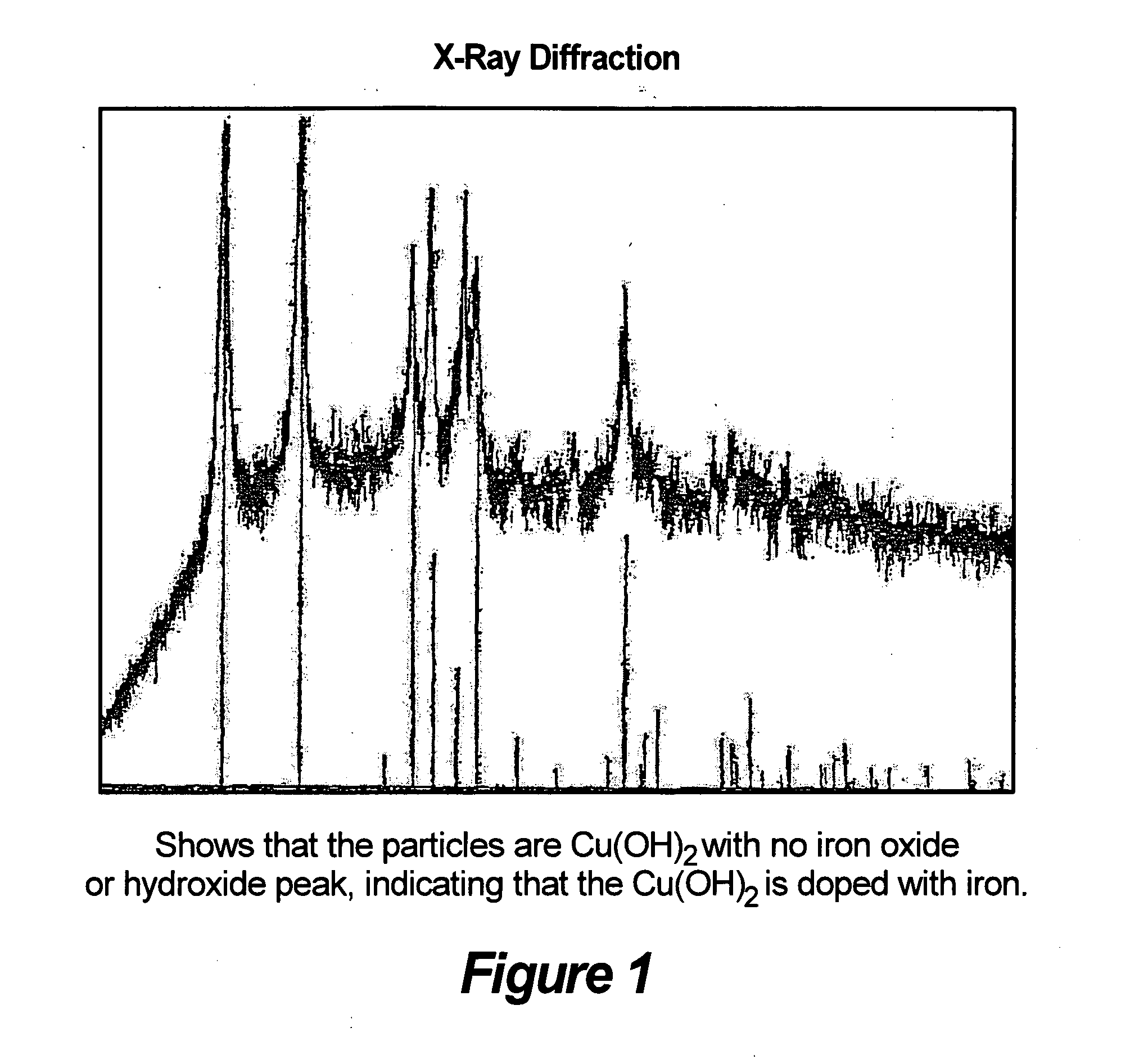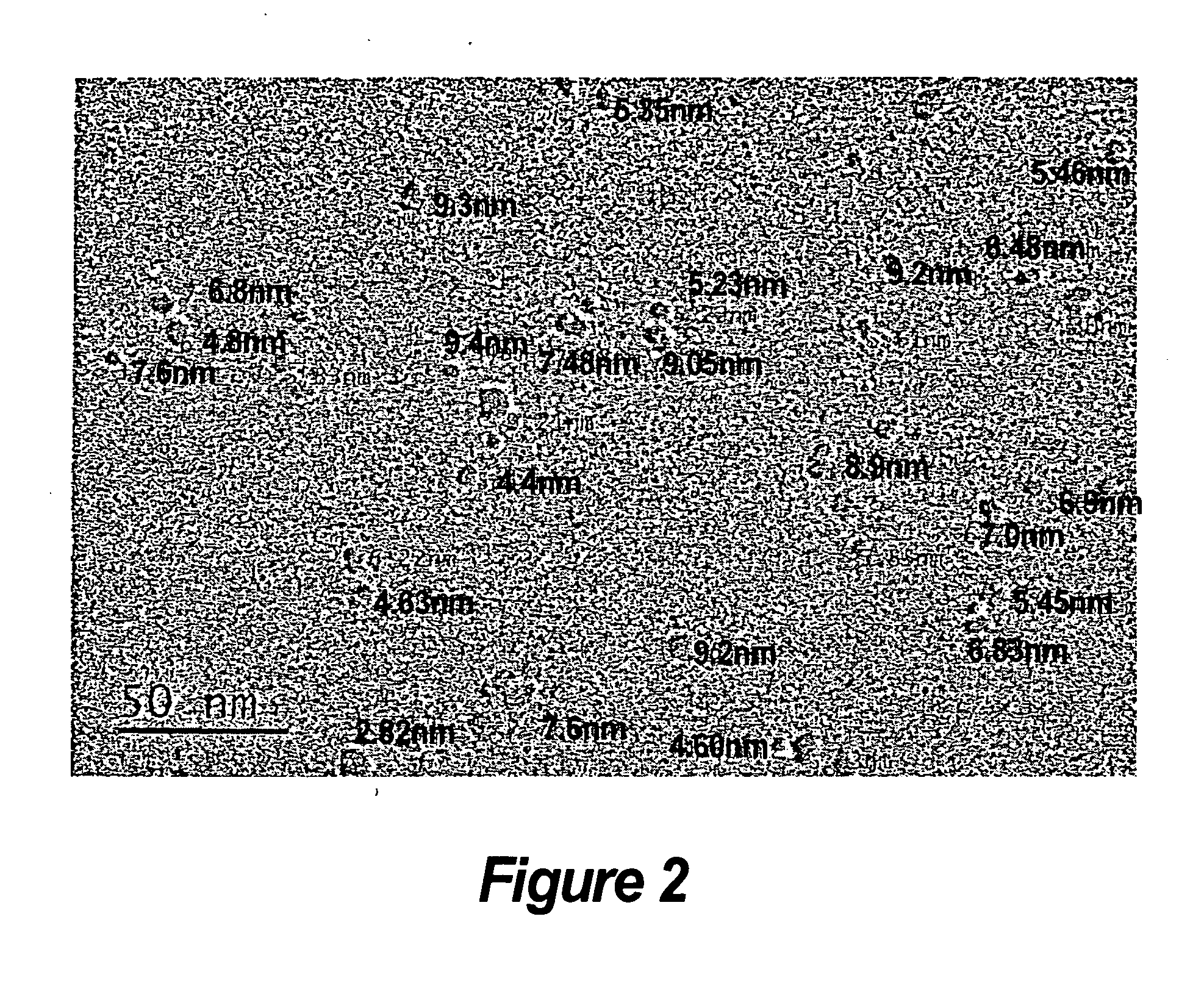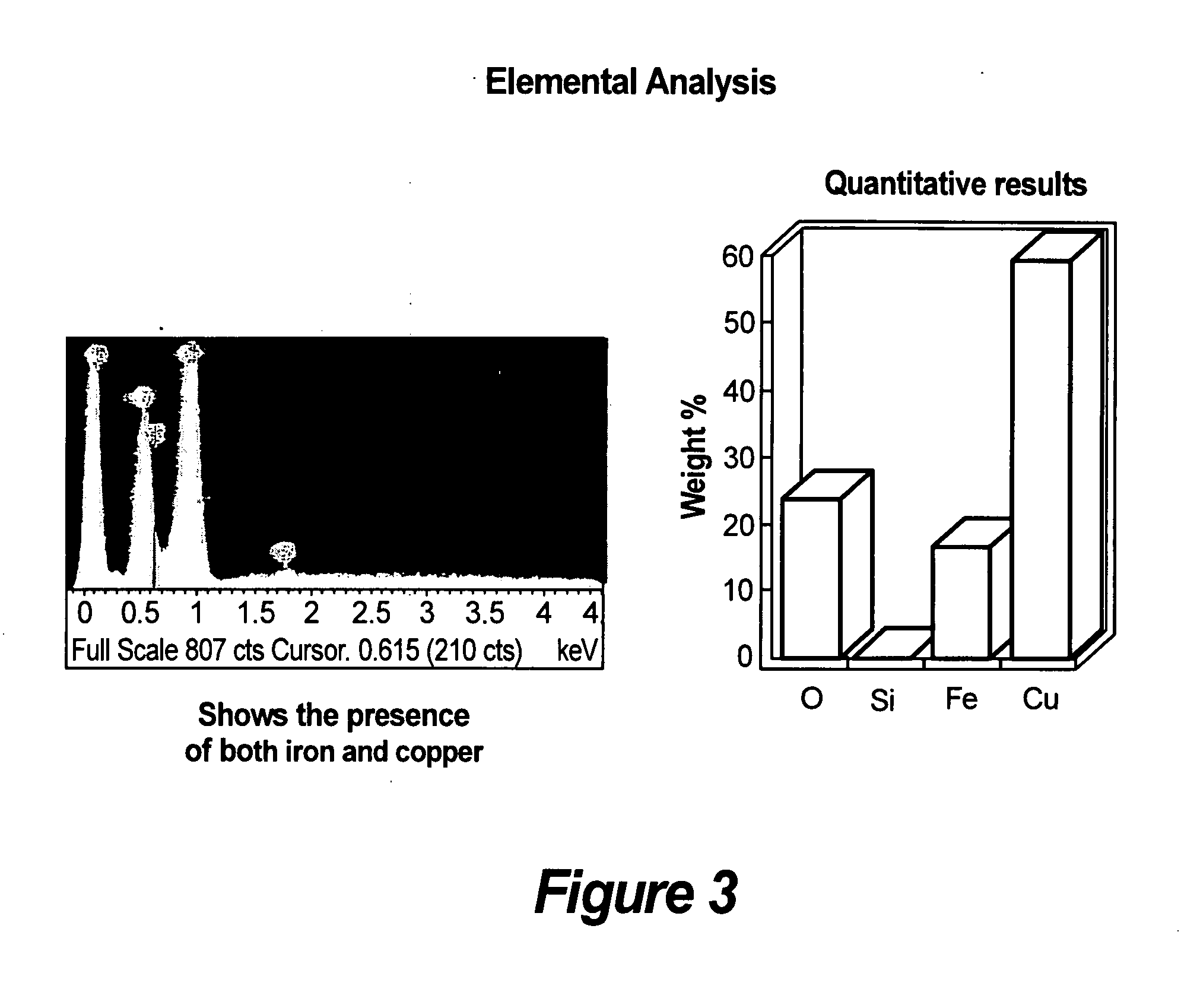Potentiation of fixed coppers and other pesticides containg copper and supplementing plant nutrition
a technology of fixed copper and pesticides, which is applied in the field of potentiation of fixed copper pesticides, can solve the problems of large particulates undesirable for systemic administration, large use of fixed copper compounds, so as to reduce the breadth, depth and range of pesticides, and restore sensitivity and high activity.
- Summary
- Abstract
- Description
- Claims
- Application Information
AI Technical Summary
Benefits of technology
Problems solved by technology
Method used
Image
Examples
example 1
Synthesis of Iron-Doped Copper Hydroxide
[0075]Iron-doped Copper Hydroxide (Fe—Cu(OH)2) composite powder is synthesized using a wet chemical process. The starting materials for the synthesis were copper nitrate hexahydrate(Cu(NO3)2.6H2O), iron chloride (FeCl3), sodium hydroxide (NaOH) and deionized water (H2O). To synthesize ˜15 at % Fe-doped— Cu(OH)2, 2.43 g of copper nitrate hexahydrate and 0.4 g of iron chloride were dissolved in 75 mL of deionized water in a round bottom flask. The solution was refluxed for 3 hours. Once the solution cooled down to room temperature, 102.2 mL of 0.25 M NaOH was added. The pH at this stage was between 10 and 11. Subsequently, the solution was transferred to a beaker and another 102.2 mL of NaOH was added, while stirring the solution, using a high shear mixer at ˜1000 rpm. The pH after the addition of NaOH was between 11 and 12. The precipitate was washed one time using deionized water and finally dried in air. Similar methods were used to synthesiz...
example 2
Synthesis of Iron-Zinc-Doped Copper Hydroxide
[0077]Iron-Zinc-doped Copper Hydroxide (Fe—Zn—Cu(OH)2) composite powder is synthesized using a wet chemical process. The starting materials for the synthesis were copper nitrate hexahydrate (Cu(NO3)2.6H2O), iron chloride (FeCl3), zinc sulfate heptahydrate (ZnSO4.7H2O), sodium hydroxide (NaOH) and deionized water (H2O). To synthesize˜7.5 at % Fe—7.5 at % Zn-doped— Cu(OH)2, 2.43 g of copper nitrate hexahydrate, 0.21 g of zinc sulfate heptahydrate and 0.19 g of iron chloride were dissolved in 75 mL of deionized water in a round bottom flask. The solution was refluxed for 3 hours. Once the solution cooled down to room temperature, 102.2 mL of 0.25 M NaOH was added. Subsequently, the solution was transferred to a beaker and another 102.2 mL of NaOH was added, while stirring the solution, using a high shear mixer at ˜1000 rpm. The precipitate was washed one time using deionized water and finally dried in air. The similar method was used to synt...
example 3
Synthesis of Zinc-Doped Copper Hydroxide
[0078]Zinc-doped Copper Hydroxide (Zn—Cu(OH)2) composite powder is synthesized using a wet chemical process. The starting materials for the synthesis is were copper nitrate hexahydrate (Cu(NO3)2.6H2O), zinc sulfate heptahydrate (ZnSO4.7H2O), sodium hydroxide (NaOH) and deionized water (H2O). To synthesize ˜15 at % Zn-doped— Cu(OH)2, 2.43 g of copper nitrate hexahydrate, 0.42 g of zinc sulfate heptahydrate were dissolved in 75 mL of deionized water in a round bottom flask. The solution was refluxed for 3 hours. Once the solution cooled down to room temperature, 102.2 mL of 0.25 M NaOH was added. Subsequently, the solution was transferred to a beaker and another 102.2 mL of NaOH was added, while stirring the solution, using a high shear mixer at 1000 rpm. The precipitate was washed one time using deionized water and finally dried in air. The similar method was used to synthesize other variations of zinc-copper hydroxide composite.
PUM
| Property | Measurement | Unit |
|---|---|---|
| particle size | aaaaa | aaaaa |
| particle size | aaaaa | aaaaa |
| particle size | aaaaa | aaaaa |
Abstract
Description
Claims
Application Information
 Login to View More
Login to View More - R&D
- Intellectual Property
- Life Sciences
- Materials
- Tech Scout
- Unparalleled Data Quality
- Higher Quality Content
- 60% Fewer Hallucinations
Browse by: Latest US Patents, China's latest patents, Technical Efficacy Thesaurus, Application Domain, Technology Topic, Popular Technical Reports.
© 2025 PatSnap. All rights reserved.Legal|Privacy policy|Modern Slavery Act Transparency Statement|Sitemap|About US| Contact US: help@patsnap.com



